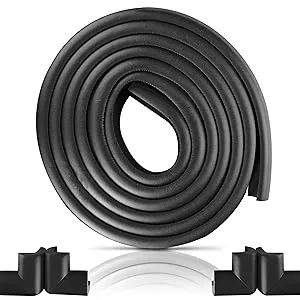bottom seal on door
The Importance of Bottom Seals on Doors
When it comes to ensuring the comfort and efficiency of our living and working spaces, details often make a significant difference. One such detail that is frequently overlooked is the bottom seal on doors. Despite being a small component, the bottom seal plays a crucial role in various aspects of interior and exterior door performance, including energy efficiency, security, and noise reduction.
What is a Bottom Seal?
A bottom seal is a strip or material affixed to the bottom edge of a door. It serves as a barrier, blocking gaps between the door and the floor. Bottom seals can be made from various materials, including rubber, vinyl, or brush-like bristles, each offering distinct advantages in different environments and applications.
Energy Efficiency
One of the primary functions of a bottom seal is to enhance energy efficiency within a building. Doors often have gaps at their bases that can allow drafts, which lead to heat loss in winter and cool air loss in summer. This inefficiency puts extra strain on heating and cooling systems, increasing energy bills and environmental impact.
By installing a proper bottom seal, homeowners and business owners can significantly reduce air leakage. For instance, a good seal can lower heating costs by up to 20%, as the systems do not have to work overtime to maintain comfortable temperatures. Moreover, effective sealing contributes to a more consistent indoor environment, making for a more pleasant atmosphere year-round.
Noise Reduction
In addition to energy efficiency, bottom seals also contribute to noise reduction. In urban areas, for example, excessive noise can be a nuisance, affecting the quality of life. Bottom seals can help minimize the transmission of sound from one room to another or from the outside to the inside, creating a quieter environment. This is particularly important for spaces requiring concentration, such as offices, recording studios, or bedrooms.
bottom seal on door

The right seal can create a sound barrier, absorbing and blocking external noises. This is especially useful for doors leading to busy streets or noisy communal areas. A well-sealed door can create a sanctuary, allowing individuals to focus or relax without disruptive sounds from the outside world.
Pest and Weather Protection
Another critical aspect of bottom seals is their ability to protect against pests and adverse weather. Bottom seals act as a deterrent for insects, preventing them from entering homes and businesses through the crevices at the base of doors. This is especially important in regions where pest infestations are common.
Moreover, a good seal can protect against water and debris during inclement weather. For instance, during heavy rain or snow, lower door seals can prevent water from seeping into buildings, which can lead to costly damage. They also keep out dust, dirt, and small particles, contributing to a cleaner indoor environment.
Choosing the Right Bottom Seal
When selecting a bottom seal, several factors should be considered, including the type of door, the environment in which it will be used, and personal preferences regarding aesthetics and materials. There are several installation options, including adhesive types, sweep styles, and threshold seals, each offering unique benefits.
Proper installation is essential for maximizing the performance of the bottom seal. A poorly installed or damaged seal can defeat its purpose and may even exacerbate issues like drafts or noise.
Conclusion
In summary, the bottom seal on doors is an essential yet often overlooked feature that contributes significantly to a building's efficiency, comfort, and security. Whether you are looking to enhance energy efficiency, reduce noise, or protect your space from pests and weather, investing in a quality bottom seal is worthwhile. Small details can lead to significant improvements, and the bottom seal is a perfect example of this concept in action. By ensuring that your doors are properly sealed, you can enjoy a more comfortable and efficient living or working space.
-
Under Door Draught Stopper: Essential ProtectionNewsJul.31,2025
-
Garage Door Seal and Weatherstrips for ProtectionNewsJul.31,2025
-
Edge Banding Tape for Perfect EdgesNewsJul.31,2025
-
Table Corner Guards and Wall Corner ProtectorsNewsJul.31,2025
-
Stair Nose Edging Trim and Tile Stair SolutionsNewsJul.31,2025
-
Truck Bed Rubber Mats for Pickup BedsNewsJul.31,2025
-
Window Weather Stripping for Noise ReductionNewsJul.29,2025